Keeping it Fresh: Farmers Markets Offer FCPS Students Environmental Lessons, and Families Expanded Access to Healthy Meals
Students, staff, and families at Willow Springs Elementary School are getting nutrition in a unique way - by running their own farmers market.
On Wednesday afternoons at Centreville Elementary School, a treasure trove sits outside the front office — treasure that’s rich in vitamins and nutrients. Box by box, a local farmer hauls in fresh eggs, bell peppers, apples, tomatoes, potatoes, and squash. Next, she wheels in a cart carrying a big mesh bag filled with ears of corn. Below that, large, plump pumpkins, ready for carving.
When the final bell rings, all of it will go up for sale in a farmers market set up outside the school’s main entrance. It’s run by students, just for students, parents, and faculty. The popular market is a unique way for these Fairfax County Public Schools students and their families to have access to healthy foods at a low cost.
Centreville’s farmers market is a tradition that started nine years ago, when STEAM teacher and Outdoor Education Specialist MaryAnn Settlemyre bought a cantaloupe at a local farmers market from Susannah Grove, a Prince William County-based farmer.
For both, it’s a partnership that remains mutually beneficial.
“Not only are we supporting a local farmer, but more and more children are learning that eating clean is delicious,” Settlemyre said.
Grove agreed. “My biggest challenge as a local producer is I have an uneducated consumer right now,” she explained. “I will have people that don’t know what an eggplant is … they don’t know what to do with a green bean. We are now educating these kids from the beginning, and that’s huge.”
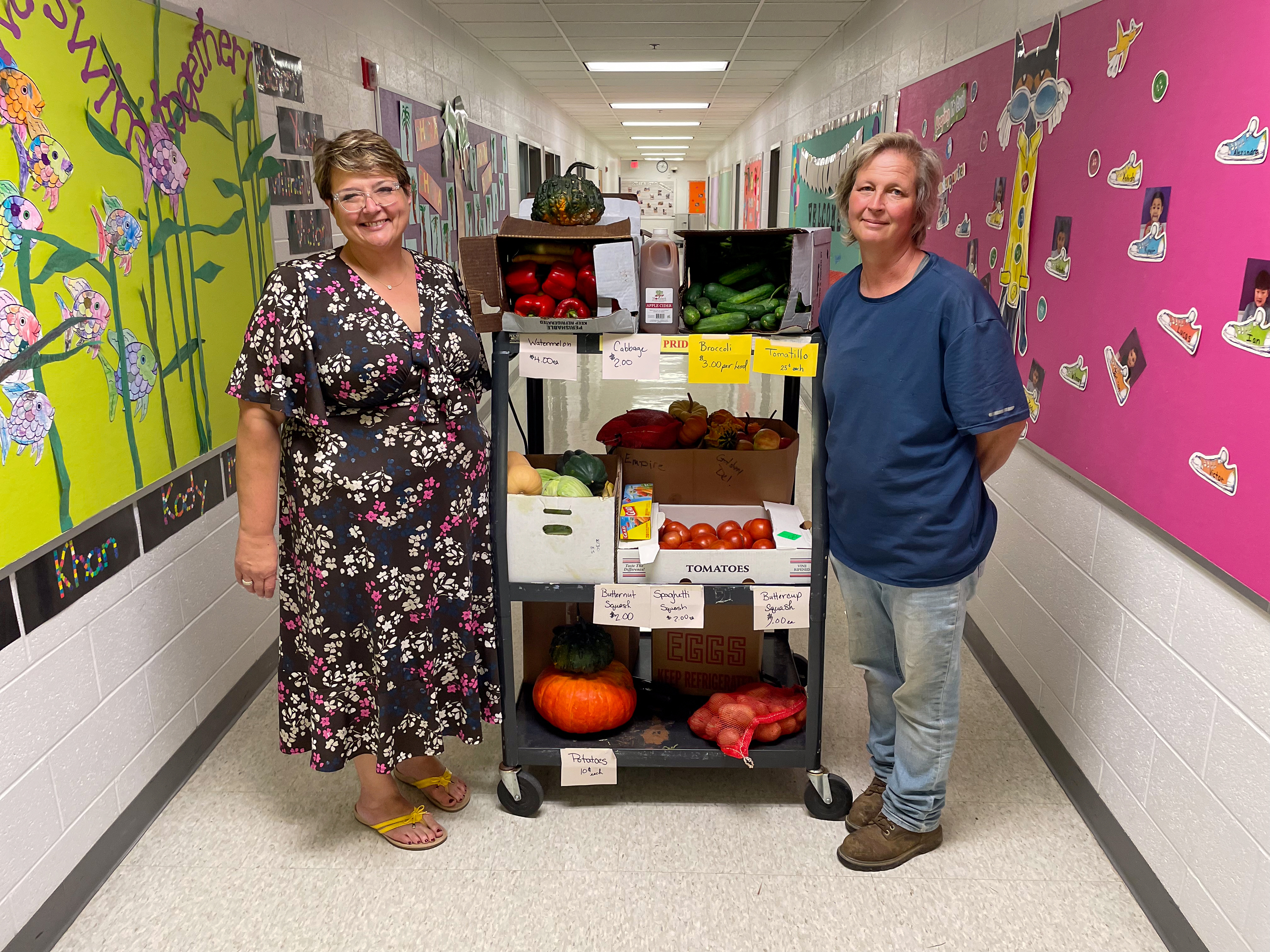
Lessons in STEAM, from the Garden to the Farm Stand
The farmers market complements the students’ many lessons in STEAM education, and there are collaborations across disciplines. Some students grow their own produce in a school garden. Once it’s ripe, it gets sold right next to the farm-fresh produce on Wednesdays, with a “CES Grown” label that Settlemyre says draws buyers right to it.
In a world where processed food dominates supermarket shelves, it’s a real-time lesson on where the freshest foods come from.
Settlemyre recalls a recent science class with first graders in the Centreville garden. “They were out there looking at the leaves of the vegetable bed and they found the strawberries,” she said. “And they’re out there going, ‘This is where a strawberry comes from?;’ ‘Oh look, there’s a flower. That’s gonna be a strawberry!’ They learned a whole plant life cycle lesson in two minutes in the garden.”
Those strawberries, and other farm fresh foods, eventually make their way to the farmers market, and the students running the stand are ready to offer recommendations to customers.
“I like to tell them that the apples are awesome,” said Emma, a fourth grade student who volunteers at the farmers market.
“They’re just so sweet and they’re so, so good to have just like, as a snack,” said Maeve, another fourth grade volunteer.
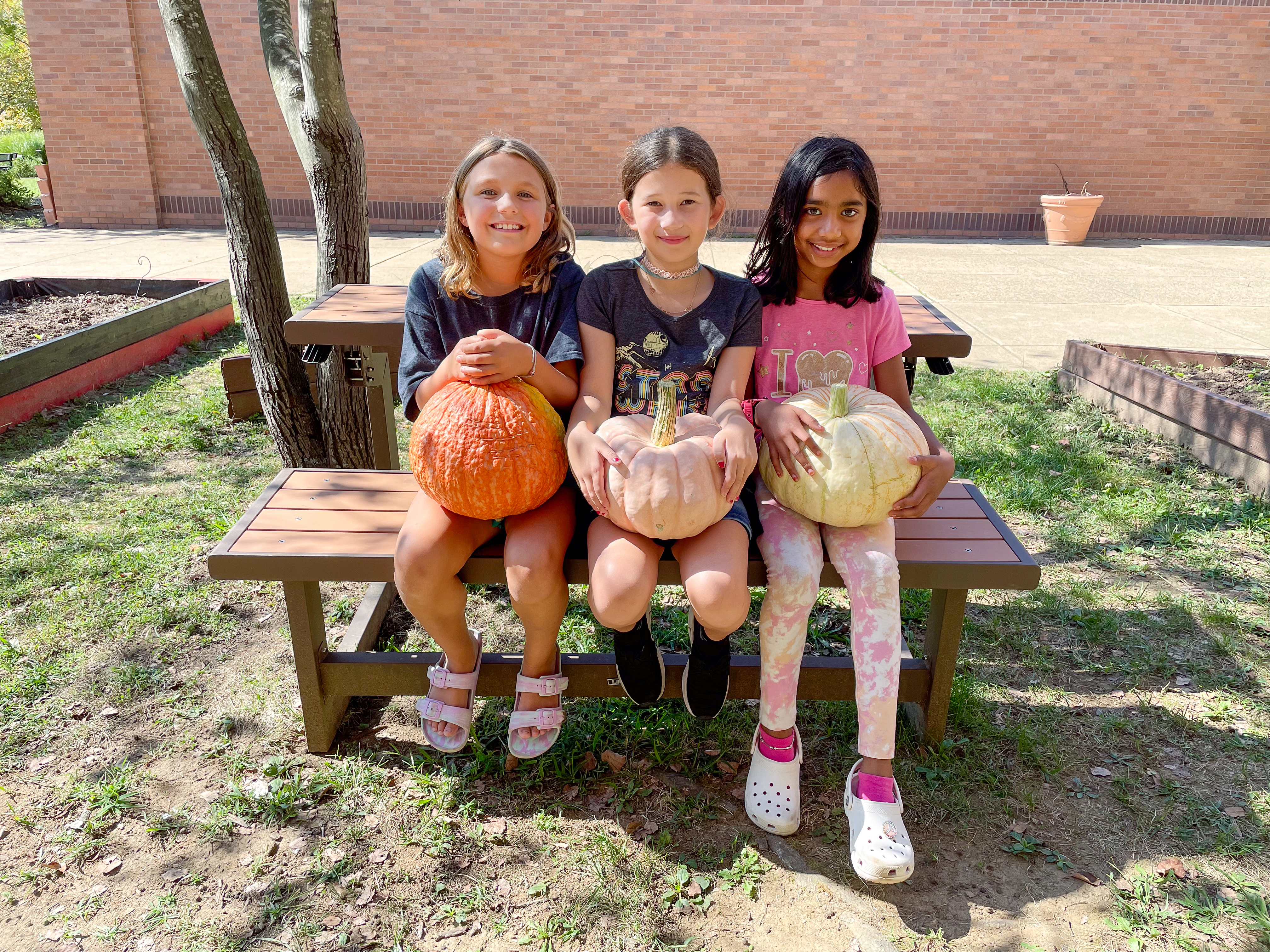
Settlemyre chooses four students in the fall, and then a different group of four in the spring, to stay after school on Wednesdays and volunteer at the farmers market. “They run the show,” she explained. In addition to learning about and recommending nutritious foods, the students learn how much each food costs, and they have to add up a customer’s total and make change.
Settlemyre says all of these valuable lessons align with FCPS’s Portrait of a Graduate goals.
“You’re looking at your Communication and Collaboration,” said Settlemyre. “You’re also looking at your Creative and Critical Thinking, because they have to problem solve on the go.”
Settlemyre described a time when student volunteers were selling tomatoes: the large tomatoes sold for one dollar each, and medium ones for 50 cents. How large is a large tomato? By comparison, how small does a tomato need to be to be medium-sized? “They have to be making those judgment calls,” she explained.
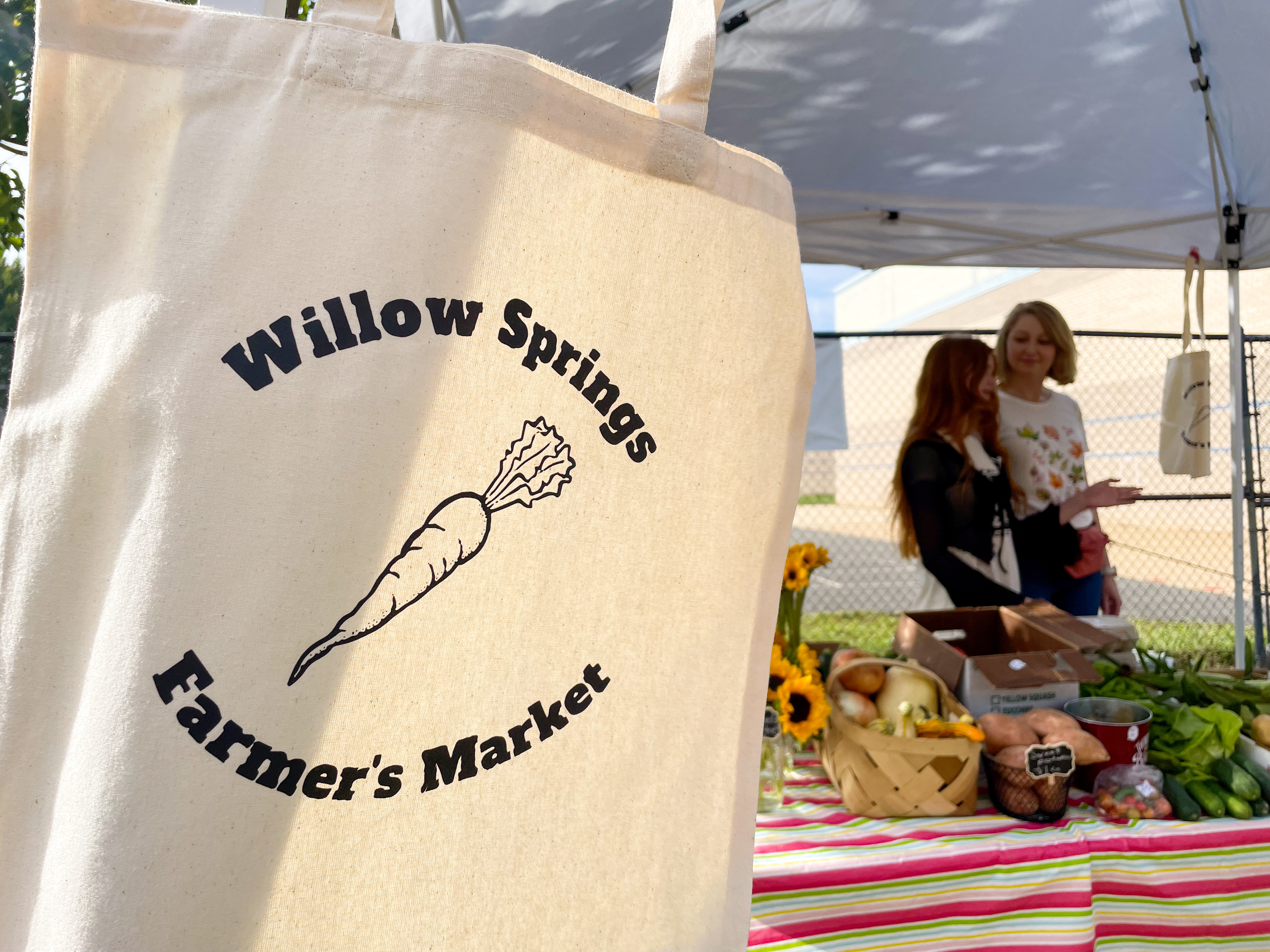
Taking Root at a New School
The farmers market at Centreville Elementary School proved to be so successful that Grove started delivering produce to a second school. A farmers market at Willow Springs Elementary School in Fairfax has operated after the bell every Friday for the last three years. There, parent volunteers work behind the counter alongside the students. For those families, it is an opportunity to learn new, healthy recipes to try at home.
“My mom and I have made zucchini bread before, with the zucchini from here,” said Arina, a sixth grade student volunteer. “We’ve never actually made zucchini bread before that.”
Arina’s mother, Yulia, also volunteers at the farmers market. She said the produce the market offers “absolutely” helps work healthier foods into the whole family’s diet. “It’s really contributing in the house,” she said, “and the kids have that full cycle, how they just grow [produce], then go to the market, and they can get them, and [make] something useful and really delicious at home. And it’s simple; they can make it their own.”
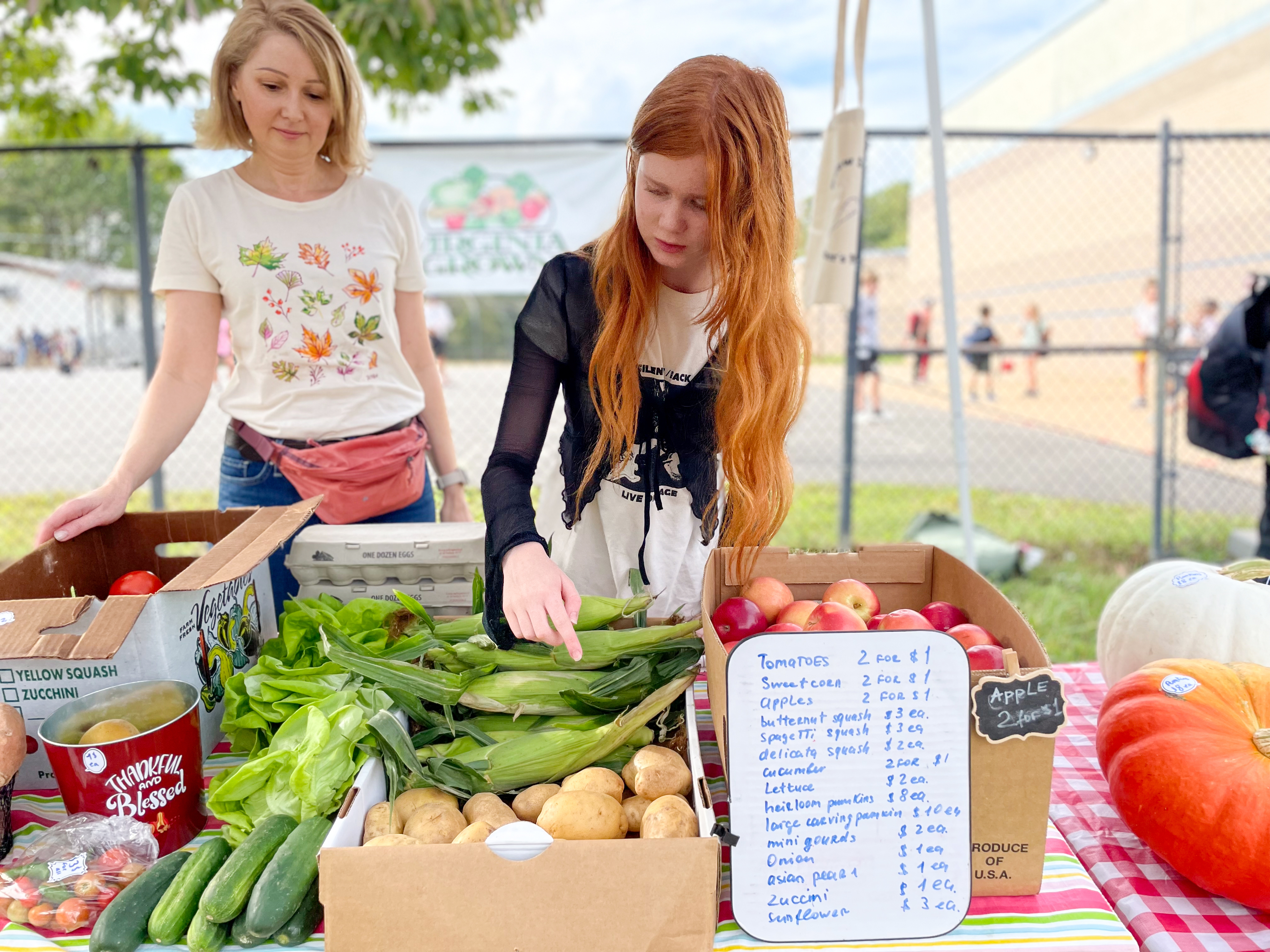
Willow Springs STEAM and Get2Green school lead Carley Fisher-Maltese often collaborates with Settlemyre on projects. Fisher-Maltese asked Settlemyre about the Centreville farmers market during a professional development workshop, hoping to do the same at Willow Springs. Since then, the second market proved to be equally successful.
“For some reason, having the farmers market generates a lot of excitement among students and staff about the seasonal produce, the fruits and the vegetables,” Fisher-Maltese said. “On one level [the students] are just excited, they bring some money in on Fridays and they buy an apple before they get onto the bus or they will get something to snack on, or they talk to their parents about bringing home something.”
Willow Springs’ farmers market also works closely with the school’s Garden Club, which Fisher-Maltese also leads. In addition to selling the produce they grow, students learn how to make recipes that use the ingredients available to them both in the garden and in the farmers market.
“Every week I think that’s one of their favorite things: ‘what are we cooking today?,’ ‘what's in the garden that we can harvest?,’ ‘what can we cook with it?,’” Fisher-Maltese said, “and I think that generates a lot of excitement about the food, and it’s something that builds community too.”
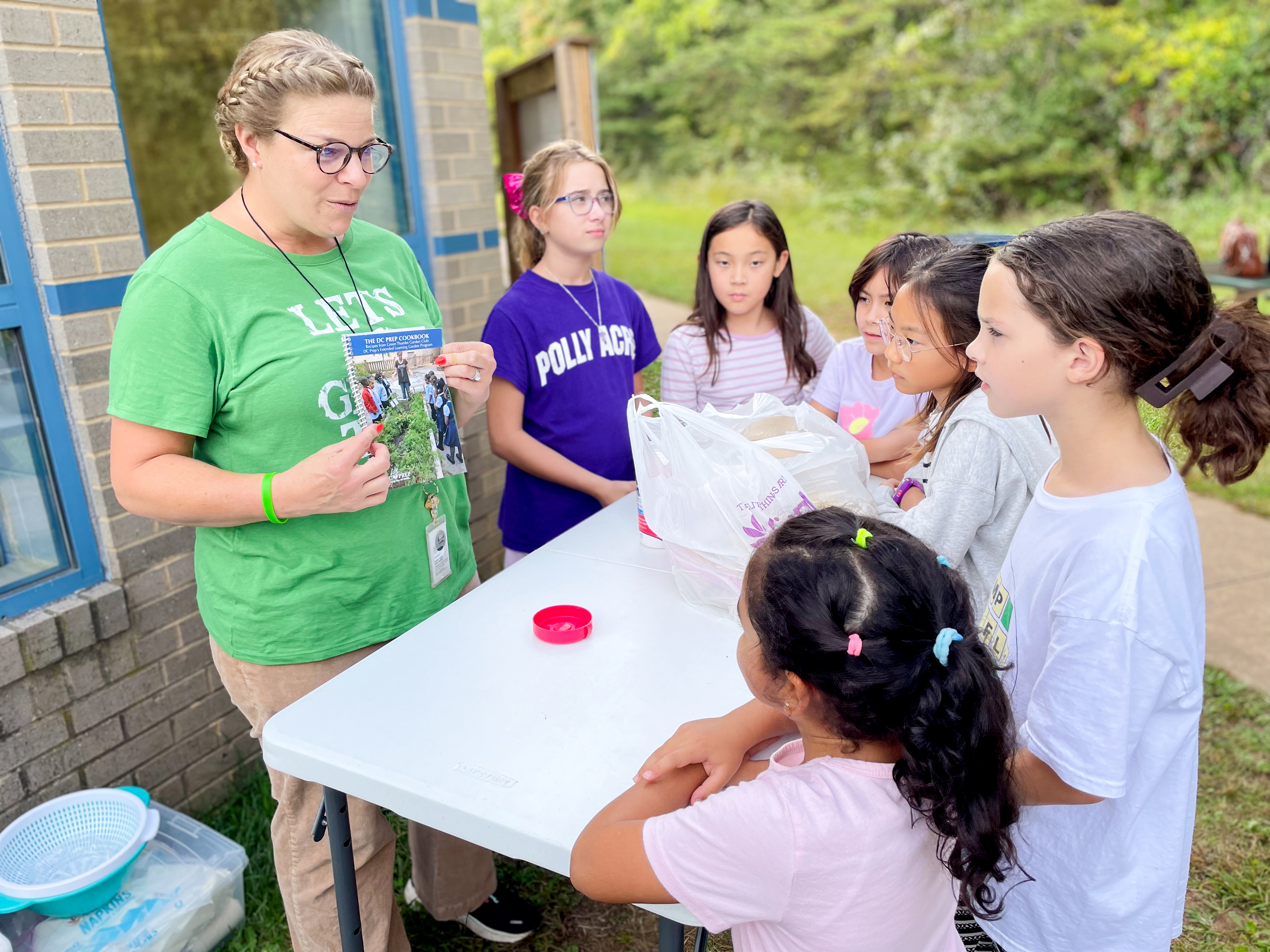
The entire student body reaps the rewards. The recipes students cook even once were offered in the Willow Springs cafeteria to rave reviews (something she hopes to do more of in the future). Fisher-Maltese remembered a time when students made soup and salad with Swiss chard that they harvested. “I had a line across the cafeteria,” she recalled. “I remember it vividly, it was during the sixth grade lunch, I had a huge line, and then I had kids, they were getting in line for a second and third time to have more of the Swiss chard soup and the salad. When do you ever see children get excited and lining up to get Swiss chard soup? Maybe it was the novelty of it, maybe it was cool because it was free, but they loved it.”
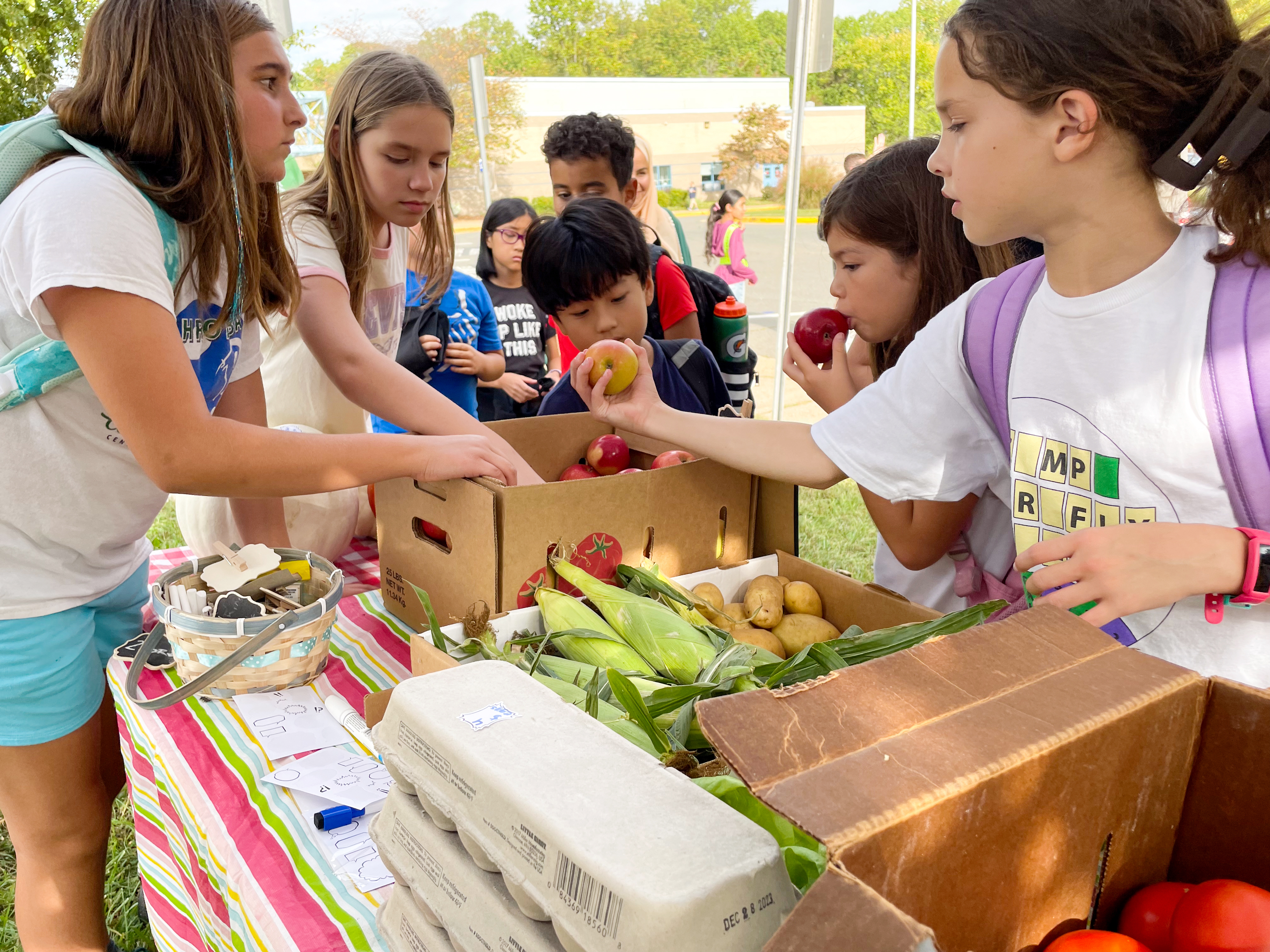
Something for Everyone
Perhaps the best part about the farmers markets at both schools: it’s cheap. Families can fill up on a week’s worth of produce for no more than $15. One of the most popular items, the apples, cost 50 cents each.
“That’s cheaper than a candy bar,” said Grove.
Settlemyre explained the farmers market is changing the conversations families are having about food and nutrition. She recalled a time when one student and her mother bought a bag of lima beans. The next week, the mother called Settlemyre asking for more.
“This very simple thing changes the culture,” she explained. “It’s a walk away from the processed foods to the whole foods.”
In fact, the farmers market at Centreville Elementary School is so popular that Settlemyre is now working to ensure it continues after she retires.
“What started out with a cantaloupe has now evolved into a culture here at CES where parents and children would be very upset to see it end,” said Settlemyre.
